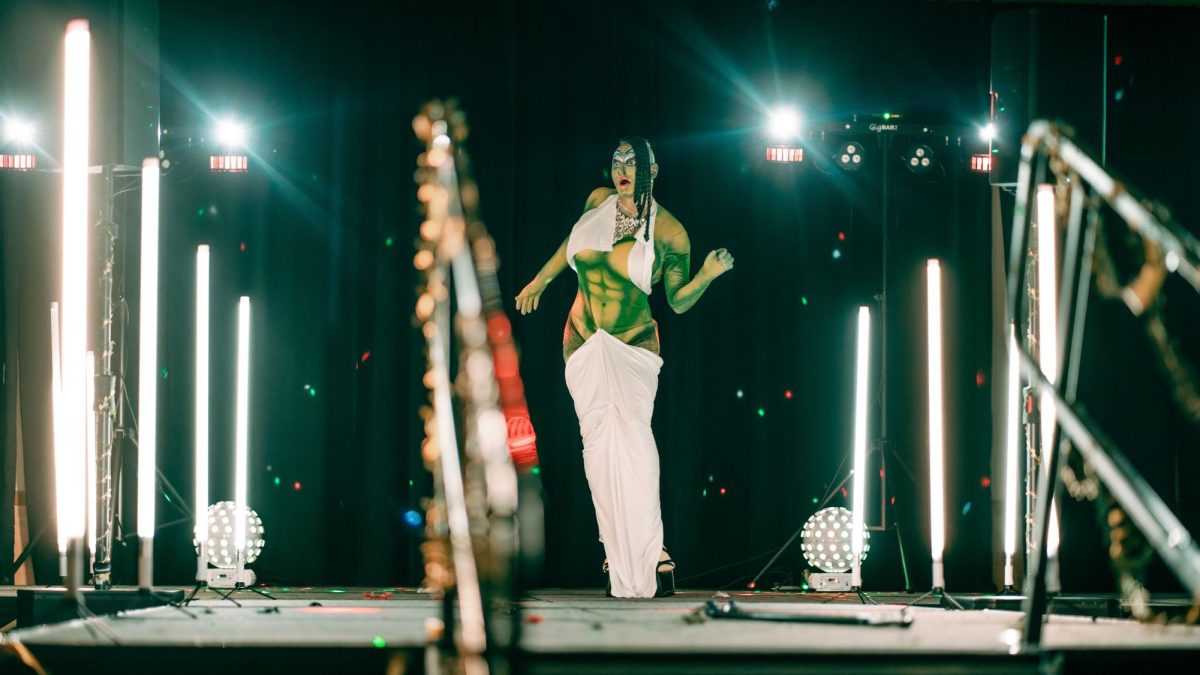The newly released “Barbie” film has undeniably captured the zeitgeist of the summer, sparking a trend of rummaging through closets for pink attire and reigniting a widespread cultural fascination with all things Barbie™.
Amidst a high-budget marketing effort plastered in pink and kitschy icons, expectations for Greta Gerwig’s latest film were set high, but the plot of the movie became increasingly ambiguous with every trailer that was released.
Fuschia clad and starry eyed, many movie-goers entered the theater July 21 expecting a glitzy and light-hearted film experience, but left considering modern day patriarchal implications and the nuances of female relationships.
The movie opens in Barbie Land, a picturesque island characterized by three-story dream houses, expansive plastic beaches, and a quasi-matriarchal society. In Barbie Land, women hold all positions of power, and the men (the Kens) stand by and admire their intelligence and influence.
With all the makings of a perfect civilization, it is in the midst of an extravagant dance party that the film’s catalyzing conflict makes an appearance, with Barbie asking, “Do you guys ever think about dying?”
From the outset, a series of un-Barbie-like incidents (feet that aren’t perfectly arched, plastic milk that has expired, and cellulite) suggest to Barbie that a larger issue is influencing her life.
Barbie and Ken travel to Venice Beach, California in hopes of correcting the troubling affairs in Barbie Land, but upon their entry discover that the societal norms they have been accustomed to at home are not reflected in the real world.
Barbie immediately feels threatened by men’s conspicuous stares and comments on her body, while Ken realizes that he is met with respect and admiration and relishes in the sudden change of power he holds simply for being.
Ken soon becomes infatuated with the concept of a patriarchal society, and leaves Barbie in the real world in order to introduce patriarchy to Barbie Land.
Barbie returns to Barbie Land to find the usual dynamic switched; Barbies are waiting on the Kens and dousing them in hollow platitudes of respected manhood and attraction. The Barbies that once were praised for their intelligence, curiosity, and career aspirations had been reduced to mindless mannequins.
This illustration of women’s perceived role in modern society is admittedly elementary to anyone familiar with the reality of existing as a woman or basic feminist theory. However, “Barbie” is not designed to introduce radical feminist rhetoric, it is designed to break down womanly exhaustion into pieces easily digestible to wide audiences.
Where the “Barbie” movie lacks an innovative perspective on gender roles, it beautifully captures the exasperating nature of womanhood.
As the Barbies fight to take back Barbie Land, Gloria (a mom from the real world who is helping organize the overthrow of Ken domination) delivers a fervent speech on the debilitating contradictions of being a woman.
Gloria outlines the need to demand respect and authority without being demanding. The need to always look pretty without being too pretty or infatuated with your own appearance. The need to consistently diminish the space you occupy.
“It is literally impossible to be a woman…Like, we have to always be extraordinary, but somehow we’re always doing it wrong,” Gloria laments.
At the conclusion of Gloria’s monologue, women across the audience were left with tear stained cheeks, not because a new faction of womanhood had been discovered, but because the pain women have been taught to suppress was being so openly expressed on the silver screen.
The banding together of different Barbies was reminiscent of how women seek out one another for support and understanding. Greta Gerwig introduced Barbie as another pillar of support for women everywhere.
“Barbie” contained a notable amount of corny jokes, upbeat dance scenes, and charming Barbie references, but these were arguably outshined by the relevant dissection of patriarchalism as it affects women today.
The movie was not a revolutionary piece of cinema in its contributions to feminist thought, but radical in its ability to take something as universal as Barbie and use her to expose a glimpse of how exhausted women are everywhere.
Seeing this iconic figure that so many children grew up alongside acknowledge all the hardship they have faced, is deeply healing in its own pink, plastic way.











